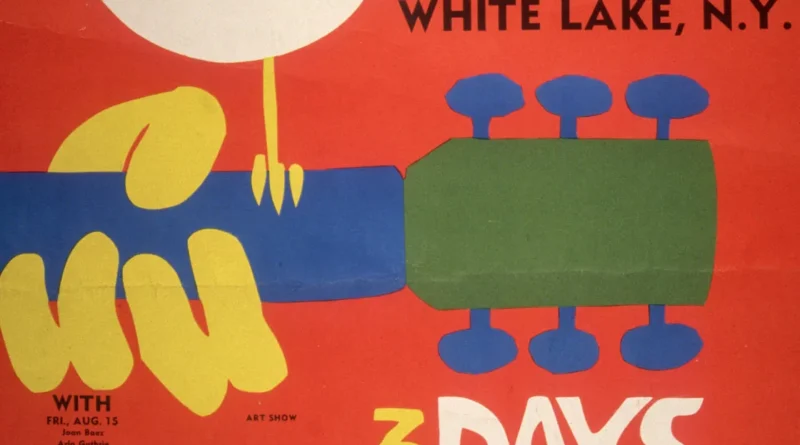Woodstock 1969: The Festival That Defined a Generation
Woodstock 1969: The Festival That Defined a Generation
Introduction: The Spirit of an Era
Woodstock 1969 was more than just a music festival — it was a cultural revolution.
Held from August 15 to 18 on Max Yasgur’s farm in Bethel, New York, Woodstock became a symbol
of peace, love, and unity during one of the most turbulent decades in American history.
Over 400,000 people gathered in harmony, creating an event that forever redefined the
meaning of community and artistic expression.
The Vision Behind Woodstock
The idea for Woodstock came from four young men — Michael Lang, John Roberts, Joel Rosenman,
and Artie Kornfeld — who envisioned a festival that celebrated music and peace.
Their goal was to create a retreat for counterculture youth, a place where people
could come together in love and freedom, far from the political unrest and violence of the late 1960s.
Initially, the organizers planned to hold the event in Wallkill, New York.
However, due to permit issues and local opposition, they relocated to a
600-acre dairy farm owned by Max Yasgur. This decision became one of the
most pivotal in music history, setting the stage for one of the greatest
gatherings ever recorded.
Building a Peaceful Revolution
The Woodstock festival was not just about music; it was about unity.
The organizers expected around 50,000 attendees, but the event drew nearly 500,000 —
a staggering number that transformed the small town of Bethel into a temporary city of peace.
Despite the lack of food, shelter, and proper facilities, the festival remained
remarkably peaceful, a testament to the ideals of the “hippie” generation.
The Lineup: Legends on Stage
Woodstock hosted an incredible lineup of artists who defined the sound of the 1960s and beyond.
Performers included Jimi Hendrix, Janis Joplin,
The Who, Santana, Jefferson Airplane,
Crosby, Stills, Nash & Young, and Joe Cocker.
Each act contributed to the energy and meaning of the festival.
- Richie Havens opened the festival with an improvised song, “Freedom.”
- Santana delivered a fiery performance that launched their career.
- Janis Joplin mesmerized the audience with her soulful voice.
- The Who brought raw power with “See Me, Feel Me.”
- Jimi Hendrix closed the festival with his legendary rendition of “The Star-Spangled Banner.”
The Challenges: Chaos Meets Harmony
The festival faced enormous logistical challenges. Torrential rain turned the grounds into a sea of mud,
and food shortages threatened to derail the event. Yet, rather than descending into chaos,
attendees shared what they had and supported one another — creating a living example of peace and cooperation.
The U.S. military even intervened, not with force, but with aid — providing medical support and airlifting supplies.
This unique collaboration reflected the festival’s spirit of unity and compassion.
The Cultural Impact of Woodstock
Woodstock became an emblem of the counterculture movement — a turning point in how music, politics,
and social ideals intertwined. It marked the peak of the 1960s’ “peace and love” ethos,
while also influencing future festivals such as Glastonbury, Coachella, and Lollapalooza.
The festival was immortalized in the Oscar-winning documentary Woodstock (1970),
which captured the event’s emotion, chaos, and beauty. Its success helped define the
modern concept of the music festival as both entertainment and social statement.
Iconic Performances That Shaped Music History
Each artist brought their own message to Woodstock, blending music and activism.
Jimi Hendrix’s guitar-driven anthem challenged patriotism and war.
Joan Baez sang for peace and justice. Country Joe McDonald led the crowd in a protest chant against the Vietnam War.
The result was a tapestry of sound and sentiment that transcended time.
Woodstock’s Legacy: More Than Just Music
Decades after 1969, Woodstock remains a benchmark for artistic freedom and human connection.
Its message of unity in diversity has influenced generations of artists, activists,
and dreamers. Anniversary festivals in 1994 and 1999 attempted to recreate the magic,
though none matched the authenticity of the original.
Today, Woodstock is remembered as a symbol of hope — proof that music can bridge
divides, heal wounds, and inspire change. It represents a time when a generation
believed in peace, love, and the power of togetherness.
Conclusion: The Moment That Changed the World
Woodstock 1969 was more than an event — it was a movement, a dream made real.
For three days, music became a force for peace, inspiring millions to believe
in the possibility of a better world. Even decades later, its spirit endures,
echoing through the chords of every guitar, the lyrics of every protest song,
and the hearts of those who still believe that love and music can change the world.
